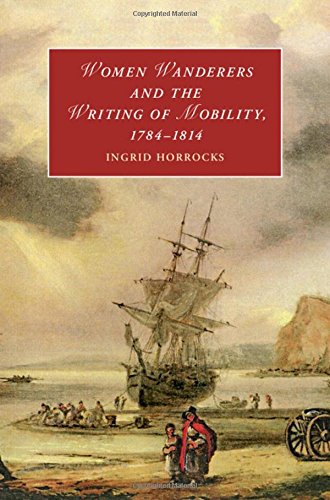Wanderlust oder Wander-lost: Gender, Mobilität und Sympathie in Literatur des späten achtzehnten Jahrhunderts
Abstract
Ingrid Horrocks Women Wanderers and the Writing of Mobility, 1784-1814 lässt die traditionellen Figurationen des männlichen Reisenden und Entdeckers hinter sich und analysiert sowohl die thematischen als auch formalen Repräsentationen der ‚widerwilligen Wanderin‘ in Werken weiblicher Schriftstellerinnen. Sie bettet dazu die Arbeiten von Charlotte Smith, Ann Radcliffe, Mary Wollstonecraft und Frances Burney in den größeren Kontext der Mobility und Sympathy Studies und betont zwei wichtige gegenderte Privilegien, die der Mehrheit der Frauen nicht zur Verfügung standen: das Reisen als eine befreiende Suche nach individueller Identität, und Sympathie als ein ethisches Produkt von losgelöster Beobachtung. Indem Horrocks die fehlende Sympathie in den schmerzvollen, endlosen Bewegungen von Frauen minutiös aufzeigt, gewinnt sie nicht nur Erkenntnisse über den sozialen und psychologischen Status der Frau in Großbritannien im späten achtzehnten Jahrhundert, sondern auch über die Rolle des Reisens in der britischen Literatur allgemein.

Copyright (c) 2019 Sijie Wang

Dieses Werk steht unter der Lizenz Creative Commons Namensnennung 4.0 International.
Alle Beiträge (nicht die Buchcover) in KULT_online seit der 50. Ausgabe erscheinen unter der Lizenz Creative Commons Namensnennung 4.0. Die veröffentlichten Beiträge dürfen Sie unter den Bedingungen der Lizenz frei nutzen, insbesondere auch für kommerzielle Zwecke und durch Bearbeitung der Beiträge (allgemeinverständliche Fassung). Die Autor_innen von KULT_online haben der Zeitschrift die Veröffentlichung erlaubt und ihre Texte unter einer CC-BY-Lizenz veröffentlicht. Es findet keine exklusive Übertragung von Verwertungsrechten („copyright transfer“) an die Zeitschrift statt. Für die Buchcover gelten die urheberrechtlichen Bestimmungen des Verlages, bitte kontaktieren Sie das Verlagshaus für jede rechtmäßige Weiternutzung. Alle Beiträge der Ausgaben 1-49 sind online frei zugänglich und unterliegen den Nutzungsbeschränkungen gemäß des deutschen Urheberrechts



